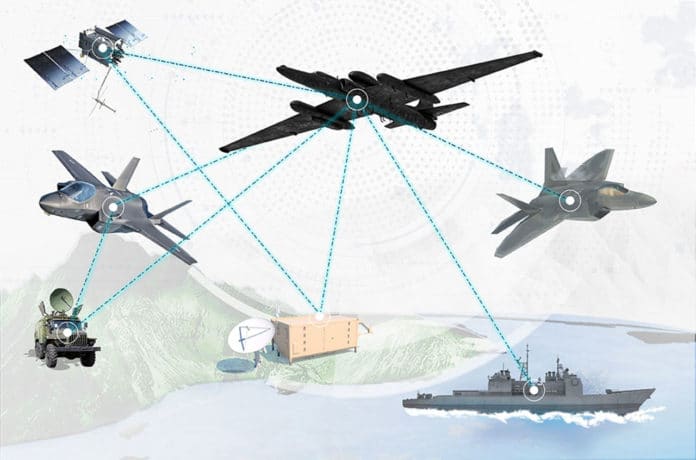The US Air Force’s (USAF) Lockheed Martin successfully linked a U-2, five F-35s, and an F-22 in air and provided real-time 5th Generation data to one another and to operators on the ground – using a communications gateway aboard a U-2 spyplane.
Named Project Hydra, the latest flight test was conducted by Lockheed Martin Skunk Works, the US Missile Defense Agency, and the US Air Force. The F-35’s Multifunction Advanced Data Link (MADL) and the F-22’s Intra-Flight Data Link (IFDL) are incompatible, so the two aircraft types cannot transmit data to each other.
Project Hydra aims to overcome this communications bottleneck by using an Open Systems Gateway (OSG) payload aboard the U-2 to connect an F-22 to five F-35s via native IFDL and MADL, successfully sharing data between all airborne aircraft and with nodes on the ground. The target tracks were also transmitted by and through the U-2 into the fighter avionics and pilot displays.
“Project Hydra marks the first time that bi-directional communications were established between 5th Generation aircraft in-flight while also sharing operational and sensor data down to ground operators for real-time capability,” said Jeff Babione, vice president and general manager Lockheed Martin Skunk Works. “This next-level connectivity reduces the data-to-decision timeline from minutes to seconds, which is critical in fighting today’s adversaries and advanced threats.”
The project allowed the F-35 for the first time to pass sensor data to a ground system over a Tactical Targeting Network Terminal (TTNT) link using an airborne gateway. The data was then sent to the US Army Integrated Battle Command System (IBCS) Airborne Sensor Adaptation Kit (A-Kit), which relayed the data to the IBCS Tactical System Integration Laboratory (TSIL) at Fort Bliss, Texas. IBCS used the F-35 sensor data to conduct a simulated Army fires exercise.
By leveraging both line-of-sight (LOS) and beyond-line-of-sight (BLOS) data link capabilities of the U-2, data can now be shared directly to tactical users and globally to command and control (C2) units even when they were out of line-of-sight of one another.
